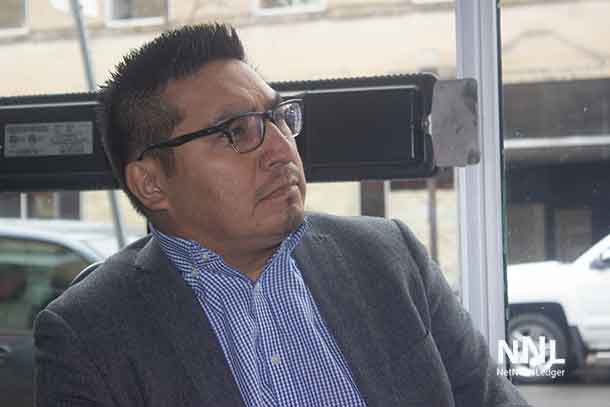THUNDER BAY – Ontario’s bail system has come under scrutiny in recent years for being a more a part of the problem than part of the solution. Critics argue that the system is too lenient on accused individuals, allowing them to be released on bail without sufficient consideration of the potential risk they pose to society.
In Ontario, an accused person is entitled to reasonable bail unless the Crown can show why it is necessary to detain them. The basic requirements for an accused person to be granted bail in Ontario are:
- The accused must show up for court when required to do so.
- The accused must not interfere with the administration of justice.
- The accused must be released on conditions that will protect the public, victims, or witnesses.
When determining whether to grant bail, the court considers several factors, including the seriousness of the charges, the accused’s criminal history, the strength of the evidence against the accused, and the potential risk of harm to the public if the accused is released on bail.
The number of times Thunder Bay Police are arresting individuals, especially suspected drug dealers from Southern Ontario and charging them with breaching their conditions of bail seem to be almost endless.
This is causing increasing concern and criticism of the legal system.
The Superior Court of Justice has been grappling with a backlog of cases that has led to extended delays in the bail process.
This has lead to lengthy wait times for bail hearings. In some cases, accused individuals have been forced to wait in jail for months on end, despite not having been convicted of any crime.
This has raised concerns among legal experts and community advocates, who argue that the current bail system is failing both accused individuals and society as a whole.
Critics of the system point to a number of factors that contribute to its shortcomings, including a lack of resources for the court system, a reliance on sureties (individuals who vouch for an accused person’s character and ensure they show up for court), and a failure to consider an accused person’s mental health and addiction issues when making bail decisions.
Despite these challenges, there are some promising signs that change may be on the horizon. In recent years, there has been a growing awareness of the need to reform Ontario’s bail system to make it more effective and equitable.
There have also been calls for increased funding for the court system to help address the backlog of cases and speed up the bail process. And some legal experts have suggested that the use of electronic monitoring, such as ankle bracelets, could be a more effective way of monitoring accused individuals who have been released on bail.

Thunder Bay has been facing a range of challenges in its jail and court systems
One of the most pressing issues is the high number of Indigenous people who are overrepresented in the criminal justice system. This has led to concerns about systemic racism and bias within the justice system, which has been highlighted in recent reports and studies.
Another issue that has plagued Thunder Bay’s court system is the significant backlog of cases. This has led to lengthy delays in court proceedings, with some cases taking years to be resolved. The backlog has been attributed to a lack of resources, including judges and court staff, as well as inadequate infrastructure.
In addition to these problems, the Thunder Bay jail has faced criticism for its conditions and treatment of inmates. Overcrowding and understaffing have contributed to a range of issues, including violence, self-harm, and poor health outcomes. The jail has also been criticized for its treatment of Indigenous inmates, with reports of discrimination and mistreatment. These issues have raised concerns about the need for significant reform in Thunder Bay’s justice system.
The announcement of a new jail for the city and the awarding of the construction contract has put some hope for solutions. However some feel it is going to be a long while before there is enough room for the current demand.
As the debate around Ontario’s bail system continues, it’s clear that there is a need for reform to ensure that accused individuals are treated fairly and that society is protected from potential harm. By working together to address the challenges facing the system, we can create a more effective and equitable bail process that serves the needs of everyone involved.
Real Solutions?
The numbers of youth and especially Indigenous youth ending up involved in the criminal justice system is deeply concerning.
There are a number of potential solutions that could help address the over-representation of Indigenous people in Ontario’s courts. One approach is to increase the availability and accessibility of diversion programs, which can help prevent minor offences from escalating into more serious criminal charges. Diversion programs can include things like counselling, addiction treatment, and restorative justice approaches that focus on repairing harm and addressing the underlying causes of criminal behavior.
Another potential solution is to improve access to legal representation and support for Indigenous people. This could include funding for Indigenous-led legal services, as well as efforts to increase the number of Indigenous lawyers and judges. It could also involve implementing cultural competency training for legal professionals, to help ensure that they are better equipped to understand and work with Indigenous clients.
Finally, efforts to address the root causes of Indigenous over-representation in the justice system are also critical. This could involve initiatives to address poverty, unemployment, and housing insecurity in Indigenous communities, as well as efforts to support Indigenous self-determination and decolonization. By addressing these underlying issues, it may be possible to reduce the number of Indigenous people coming into contact with the justice system in the first place.
Pro-active measures such as youth centres and well-financed youth programs can have a significant impact on reducing the number of Indigenous youth in the criminal justice system. These programs can provide Indigenous youth with positive opportunities for growth and development, which can help keep them away from negative influences such as gangs, drugs, and crime.
Youth centres can provide a safe and supportive environment for Indigenous youth to learn, socialize, and engage in positive activities. This can include sports, arts and crafts, music, and educational programs. By providing Indigenous youth with these opportunities, they are less likely to engage in criminal behaviour and more likely to develop positive relationships with their peers, mentors, and community.
Well-financed youth programs can also help to address the root causes of Indigenous youth involvement in the criminal justice system, such as poverty, lack of education, and mental health issues.
By providing Indigenous youth with access to resources such as counselling, job training, and educational support, they can develop the skills and knowledge needed to succeed in life. This can reduce the likelihood that they will engage in criminal behaviour, and instead become productive members of their communities.







